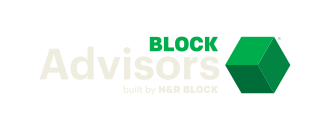Many entrepreneurs hope to find funding for their business venturee, but there are plenty of benefits that come with bootstrapping. Here are 10 well-known businesses that were started with less than $10,000.
[Read More: How to Decide Between Bootstrapping or Finding Investors]
Spanx
Sara Blakely started Spanx at age 27 with just $5,000 of her personal savings. From there, she bootstrapped the company with the sales of her product. Blakely kept her day job selling fax machines door to door while she was building Spanx.
Spanx became profitable in its first year, hitting $4 million in total revenue. Blakely still owns 100% of Spanx, which generates an estimated $400 million in annual sales.
Her advice to new entrepreneurs is, “Don’t be intimidated by what you don’t know. That can be your greatest strength and ensure you do things differently than everybody else.”
Kroger
In 1883, Barney Kroger started the grocery chain Kroger with just $372. He started his business with a simple motto: “Be particular. Never sell anything you would not want yourself.”
Kroger’s focus on exceptional customer service served him well over the years. He was one of the first grocers to establish his own bakery and to sell meat and groceries in the same place. Today, Kroger has 2,757 stores across the United States.
John Paul Mitchell Systems
John Paul DeJoria and Paul Mitchell started their luxury hair care line in 1980 with just $700. They were hoping to land an outside investment of $160,000, but nobody was interested in their business model. So the two friends were forced to go at it alone.
They set their business apart from other hair care lines by offering an outstanding product. John Paul Mitchell Systems now has over 100 products being sold in over 100,000 salons across the United States
One of the biggest lessons DeJoria and Mitchell offer new entrepreneurs is to get very comfortable with rejection. DeJoria worked as a door-to-door encyclopedia salesman, and he credits this experience with helping him develop resilience.
Dell
Michael Dell founded Dell Computers in his college dorm room in 1984. Dell had just $1,000 to get started, and he built his own customized computers and took orders over the phone. His hard work paid off, and Dell has become a well-known and widely used brand.
Dell credits his success to his willingness to be unique and his love for technology. He told CNBC, “You have to do stuff that you’re actually incredibly passionate and excited about, and you know something about.”
Plenty of Fish
Markus Frind started the dating app Plenty of Fish in 2003 with just $500, though in the beginning Frind wasn’t actually intending to start a business. He told Business Insider that he was actually just trying to give his resume a boost.
Frind created the app as a way to learn a new programming language and was surprised when people started signing up for it. He built the app without any venture capital funding. In 2015, Frind sold the company to Match Group for $575 million.
Apple became the first American public company to surpass $1 trillion in market valuation.
Apple
Steve Jobs and Steve Wozniak started Apple in Jobs’ parents’ garage with just $1,350. The two friends built a minimum viable product that they named Apple I.
Much of Apple’s growth can be credited to Jobs’ and Wozniak’s commitment to building an exceptional product. Wozniak has stated, "My goal wasn't to make a ton of money. It was to build good computers."
Jobs passed away from pancreatic cancer in 2011, but Apple’s legacy is still going strong. Apple became the first American public company to surpass $1 trillion in market valuation.
Subway
Fred DeLuca started Pete’s Super Submarines with a $1,000 loan from Dr. Peter Buck, a family friend. Today, the restaurant is known as Subway, one of the largest fast-food chains in the world.
DeLuca and Buck opened their first sandwich shop in 1965 in Bridgeport, Connecticut. Success came fairly quickly and the duo sold 312 sandwiches on the first day.
In 1974, DeLuca and Buck decided that franchising was the best way to accelerate the company’s growth. There are currently more than 40,000 Subway shops around the world.
Hewlett-Packard
Bill Hewlett and David Packard started Hewlett-Packard in a garage in Palo Alto, California, in 1939. Hewlett and Packard started the business with just $538.
Their first big product was an audio oscillator, which caught the attention of Walt Disney Studios. The company used it to produce the movie “Fantasia.” Hewlett-Packard made $5,369 in sales during its first year in business, and the company has continued to be profitable ever since.
In 2015, Hewlett-Packard split into two separate companies: Hewlett Packard Enterprise focuses on selling enterprise products, and Hewlett-Packard was renamed HP and continues to sell personal computers and printers.
Nike
In 1964, Phil Knight launched the company Blue Ribbon Sports. He co-founded the company with his former track and field coach Bill Bowerman. Today, the company is known as the global brand Nike.
Knight and Bowerman started Nike with a $1,200 investment. Today, Nike has a market cap of $156 billion. Knight credits a lot of his success to principles he learned from track and field. He stated, “The art of competing, I’d learned from track, was the art of forgetting. You must forget your limits.”
Papa John’s
John Schnatter started Papa John’s with $1,600, which he spent on a bunch of used restaurant equipment. Schnatter set up shop in the back of his father’s tavern and started making pizza.
In the beginning, Schnatter had humble expectations for what Papa John’s would become. “The original goal for Papa John’s was to make $50-grand a year and have $50-grand in the bank so I could get a date,” he says.
The publicly traded company wildly surpassed this goal and, at the time of this writing, has a market cap of $2.7 billion.
[Read More: How Experts Chose Their Business Funding Strategy]
CO— aims to bring you inspiration from leading respected experts. However, before making any business decision, you should consult a professional who can advise you based on your individual situation.
Want to read more? Be sure to follow us on LinkedIn!
CO—is committed to helping you start, run and grow your small business. Learn more about the benefits of small business membership in the U.S. Chamber of Commerce, here.









